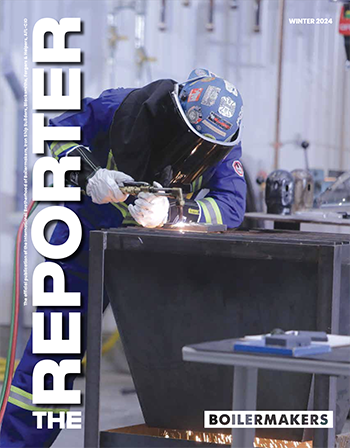“We’ve outsourced our manufacturing and much of our pollution, but some of it is blowing back across the Pacific to haunt us.”
— Steve Davis, University of California at Irvine
Asia sends us more than just tainted manufactured goods
SINCE AT LEAST the 1990s, scientists have known that pollution from Asia travels on the jet stream, carrying black carbon, nitrous oxide, particulates, and other contaminants to North America and other places in its path. On some days, Asian-sourced pollution accounts for 20 percent of West Coast smog. It brings haze deep into the continent. And it deposits mercury into our lakes and streams.
For the United States, the ill effects of China’s traveling pollution are partly a problem of our own making. By granting China most favored nation status without essential protections, the U.S. government lowered trade barriers and opened the way for the export of vast numbers of U.S. manufacturing jobs. Of course, China developed a gargantuan appetite for new energy to power its newfound manufacturing juggernaut and its exploding middle class. For a period of time, China was bringing online at least one new coal-fired plant a week. With that country’s lax environmental controls, pollution surged, surpassing U.S. carbon dioxide emissions in 2006 and continuing to spiral upwards.
Today China is the world’s largest exporter and America its largest customer. Chinese workers have flooded into already crowded urban areas, where the air is now thick with uncontrolled pollution. A sea of manufacturing plants hum with power produced with few if any emission controls, while poorly regulated industrial practices sometimes use toxic materials outlawed in the West many years ago.
As long as America keeps buying these tainted goods, the Chinese have little incentive to change their operations. Meanwhile, U.S. manufacturers that continue to operate on home soil face steep competitive disadvantages: China’s tragically cheap labor, its inadequate investment in worker safety and health, and its disregard for the environment, among other things.
“One would think that President Obama would know better than to push a free trade deal like the 12-nation Trans-Pacific Partnership.”
This brings us to where we are today. America is a nation with a wrecked manufacturing base, an enormous trade imbalance (with China, primarily), and a futile and costly energy policy that ignores an obvious and inconvenient fact — that shelving coal-fired power in the United States will not make a dent in climate change.
We are what we buy
AN INTERESTING STUDY published this past January in the Proceedings of the National Academy of Sciences ties about 25 percent of Chinese-sourced air pollution on the U.S. West Coast to China’s manufacturing of export goods to the United States and Europe. Looking at it another way, if we didn’t buy those goods, the West Coast would experience a quarter less pollution from China.
One of the study’s authors, Steve Davis, a scientist at the University of California at Irvine, put it this way: “We’ve outsourced our manufacturing and much of our pollution, but some of it is blowing back across the Pacific to haunt us.”
The truth is we’ve given up far too much to find ourselves in this predicament: the anguish of workers and their families whose good jobs have been exported, a shrunken middle class, and a loss of consumer buying power and its attendant drag on the economy. Bad decisions by our own federal government, along with the shortsightedness of corporations thirsty for cheap labor, have helped create a low-wage, high-polluting colossus in Asia. In return for our jobs, that colossus is selling us goods we used to make (only now they are dirtier) and sending us pollutants that poison our air, land, and water.
The Labor Movement and our allies warned government and industry leaders many years ago (and we’re still warning them) that free trade is fraught with problems. Developing countries have lax environmental and safety standards and weak or non-existent laws to protect their own people from exploitation by multinational corporations.
Still, the demand for these agreements persists. One would think that President Obama would know better than to push a free trade deal like the 12-nation Trans-Pacific Partnership. The highly secretive nature of TPP negotiations — and the fact that multi-nationals have a heavy hand in crafting the rules while Congress and the public are shut out — should set the klaxons blaring. The president’s urging of fast track authority, which would limit Congress to up or down votes on TPP with no opportunity for amendments, is alarming in the extreme.
Let’s not exacerbate the pollution problems of the world and perpetuate human exploitation by including nations like Malaysia and Vietnam in a free trade pact, as the TPP would do.
Where do we go from here?
AS I SEE it, there are two decisions the Obama administration must make to avoid the calamity of further trade imbalances and worsening global air pollution and climate change.
“Bad decisions by our own federal government, along with the shortsightedness of corporations thirsty for cheap labor, have helped create a low-wage, high-polluting colossus in Asia.”
First, the president must back away from the TPP free trade deal and reassess existing trade arrangements. These deals may work for other nations, but NAFTA, CAFTA, and their ilk (along with most favored nation status for China) have been absolute disasters for the American middle class and the nation as a whole. According to a January 2014 Congressional Research Services report, America imported about $440 billion in Chinese goods in 2013 while the United States exported about $120 billion to China. Any first grader can tell you which nation is on the losing end of that deal.
Second, the administration must consider the fact that air pollution from China, India, and other nations with developing economies is growing at extraordinary rates even while the U.S. and Europe have — at great cost and economic disruption — taken a path to eliminate coal-fired power plants. As I’ve stated on numerous occasions, North America won’t make a dent in slowing climate change as long as China and India are free to pollute at will. All we are doing is ensuring that our businesses and our consumers will pay more for energy in the long run while ignoring an energy source that is reliable, economical, and abundant. To achieve the kind of positive environmental change that is needed, a global commitment to make carbon capture and storage work at a commercial level must be the highest priority. We need a proven, cost-effective technology, and we need universal adoption of that technology everywhere fossil plants are operating in the world.
Without these changes, we are condemning North America and the rest of the world to ever higher concentrations of air pollution from China, India, and other expanding nations. These countries are not about to dismantle billions of dollars in recent investment for coal-fired power generation units — facilities with operational life cycles of 40 years or more.
All of Earth’s inhabitants share the same atmosphere. No matter how much we reduce our own emissions, rapidly expanding economies worldwide will eclipse those reductions in a relatively short time. Meanwhile, our trade deficits will continue to mount, and our economy will be pushed to the brink of disaster.
Developing nations should play by energy, manufacturing, and trade rules that are at least in some measure comparable to that required of developed nations. In the interest of our national well-being and the global environment, we cannot and should not demand less.






